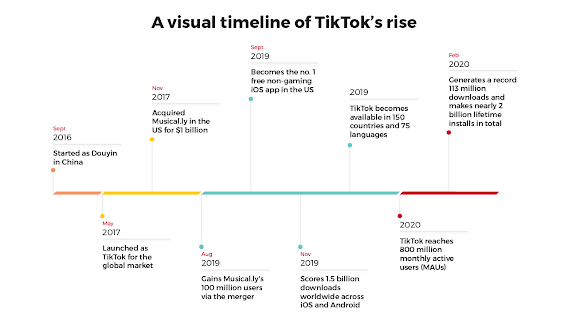TikTok Through the Diffusion Theory
TikTok is a social media network platform for creating and sharing short videos, similar to the former app known as Vine. The app is commonly known as the "ultimate time killer and very addictive because it never runs out of content" (Middletown). The Diffusion of Innovations Theory was created by communications professor, Everett Rogers, which explains the rate at which technology is adapted and why. There are five established adopter categories including Innovators, Early Adopters, Early Majority, Late Majority, and Laggards.
Early Adopters: Those that first downloaded TikTok in 2017 after the platform U.S. video app Flipgram and lip-syncing app Musical.ly
Early Majority/Late Majority: I decided to group both of the larger middle groups into one as the application blew up due to COVID-19; the platform no longer had a target market and had very little need to advertise as word of mouth was skyrocketing; President Trump also gave the app an extra boost by threatening to delete the app which caused an even larger need to download TikTok quickly
Laggards: These are the people that are downloading this app today as its downloads are plateauing due to the decrease in need; people are going back to work, school, etc. and no longer find as much time
TikTok's timeline is one like no other with the amount of PR wanted or unwanted the application is getting. From President Trump threatening to delete it to Charli D'Amelio on the front of every Dunkin' Donuts across the nation, the app has very little advertising to do on their own.



Comments
Post a Comment